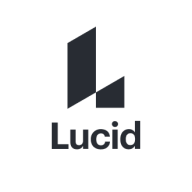

Find out in this report how the two Visual Collaboration Platforms solutions compare in terms of features, pricing, service and support, easy of deployment, and ROI.
| Product | Market Share (%) |
|---|---|
| Figma | 41.1% |
| Lucidspark | 6.0% |
| Other | 52.9% |

| Company Size | Count |
|---|---|
| Small Business | 8 |
| Midsize Enterprise | 2 |
| Large Enterprise | 3 |
| Company Size | Count |
|---|---|
| Small Business | 18 |
| Midsize Enterprise | 4 |
| Large Enterprise | 10 |
Figma is a cloud-based design tool that allows teams to collaborate in real-time on creating, prototyping, and iterating digital designs. With its intuitive interface and powerful features, Figma has become popular among designers and design teams. Figma's cloud-based nature ensures that designs are always up-to-date and accessible from anywhere. This makes it easy for teams to collaborate remotely or across different locations, fostering a more efficient and flexible workflow.
One of the key features of Figma is its real-time collaboration capabilities. Multiple team members can work on a design simultaneously, making it easy to gather feedback, make changes, and iterate quickly. This eliminates the need for time-consuming file sharing and version control, streamlining the design process.
Figma also offers a wide range of design tools and features to help designers bring their ideas to life. From vector editing and prototyping to design components and libraries, Figma provides everything designers need to create high-quality, interactive designs. Its robust design system allows for easy reuse of design elements, ensuring consistency across projects.
Another advantage of Figma is its cross-platform compatibility. It works seamlessly on both Mac and Windows operating systems, making it accessible to designers regardless of their preferred platform. Additionally, Figma offers a web-based version, allowing users to access their designs from any device with an internet connection.
Lucidspark is a virtual whiteboard where teams can bring their best ideas to light. Collaborate in real time, no matter where you are. Lucidspark helps people organize notes and scribbles and turn them into presentation-ready concepts. When it’s time for next steps, teams can develop workflows and process documents to turn ideas into reality. Features include: integrations, infinite canvas, sticky notes, freehand drawing, chat, templates, timer, voting, and more.
With Lucidspark, you can not only brainstorm ideas as a team but then refine and organize those ideas to drive action. Features like assisted grouping and Lucidchart import/export help users turn ideas into plans and strategies.
Lucidspark is part of the Lucid suite, the only visual collaboration suite that helps teams see and build the future from idea to reality. Users can start ideating in Lucidspark and then seamlessly move to Lucidchart and Lucidchart Cloud Insights to complete the full project lifecycle and make their ideas a reality.
We monitor all Visual Collaboration Platforms reviews to prevent fraudulent reviews and keep review quality high. We do not post reviews by company employees or direct competitors. We validate each review for authenticity via cross-reference with LinkedIn, and personal follow-up with the reviewer when necessary.